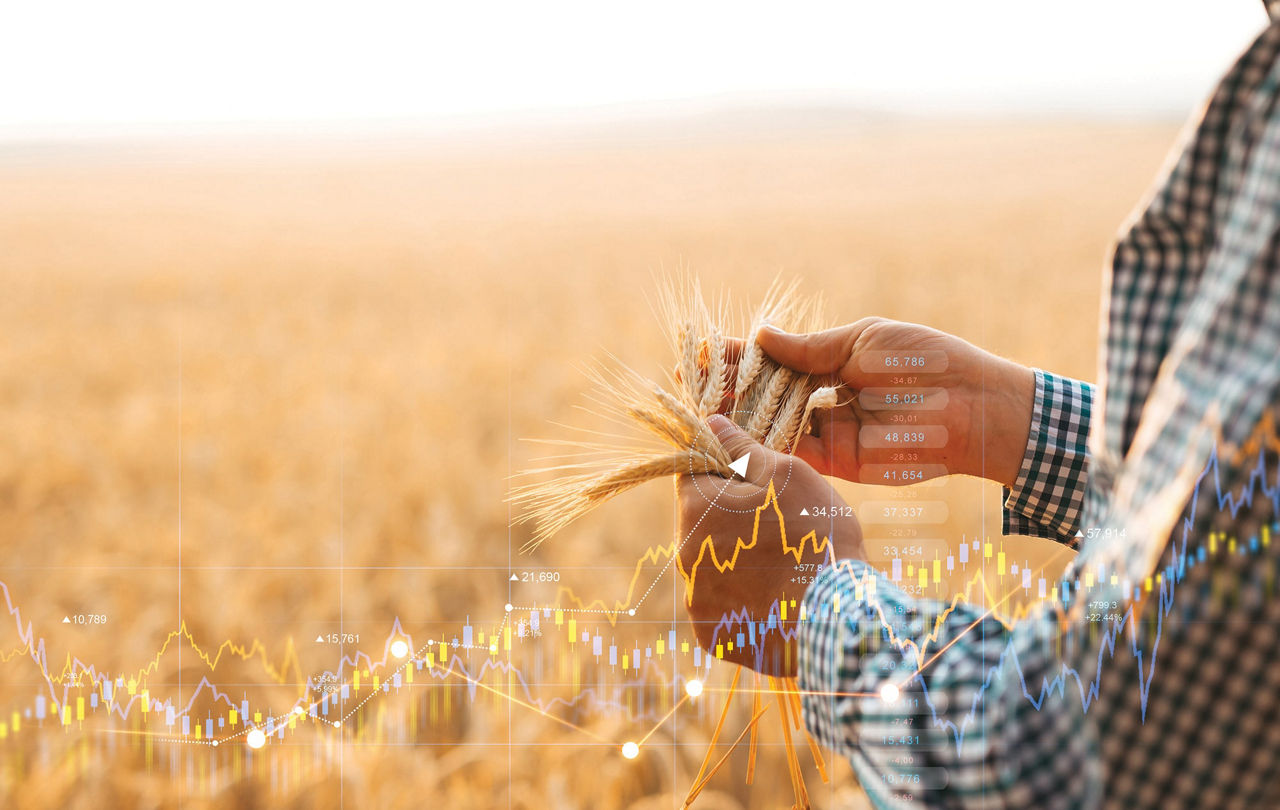Maintaining farm profitability in tough times
June 11, 2025

Protecting margins requires a clear-eyed, warts-and-all look at your farm’s numbers. An honest evaluation of your financial statements will help you make better, more profitable decisions
By Joy Gregory
Are you looking for that one tool that can help you get the most of every dollar spent on your farm? Well, you won’t find it at the local equipment dealer or sitting in your yard, say two prairie farmers with side hustles as farm management specialists. They say that farmers who want to get serious about growing for profit can access this one tool every time they sit at their office desk or turn on their cellular phones. So, what is this amazing tool? It’s the information found on your farm financial statements.
Darren Bond grows wheat, canola, soybeans and oats near Winnipeg. He’s also a farm management specialist with Manitoba Agriculture. Rob Strilchuk is a CPA and partner with MNP’s Edmonton office and operates a grain farm east of the city. Both know that today’s producers are inundated with huge amounts of economic and geo-political news, much of it confusing and stress-inducing. That’s troublesome. It’s also a distraction and potential liability, say Bond and Strilchuk. They recommend producers absorb information from the larger world but make decisions based on their own farm’s cost of production, cash flow and ability to service debt.
“I am a big proponent of producers making decisions on the cost per bushel sold,” says Bond. He says that once you know your break-even price for a crop like canola, for example, you can start looking for markets that are above that.
Bond knows farmers who were seeding this spring when they got a text alert about a premium-priced canola market. Growers who knew their cost of production jumped on the deal. Those who took time to think about it or run the numbers one more time, lost out. The contract closed before they acted, says Bond.
A specialist in crop production costs and risk management, Bond says farmers often bounce numbers off him when they do their cost projections. “With real numbers in hand, their stress levels go down because now they have less unknowns with their own farms,” he says, adding that this enables them to make decisions quickly. “These are not snap decisions, they are decisions based on good information.”
Strilchuk agrees. “A bad news cycle can put people into a kind of mental spin and that can lead to knee-jerk reactions to market news,” he says. He knows farmers who changed their 2025 crop rotation based on late-winter news about declines in canola prices. Those who made the most dramatic cuts in canola acreage were unable to take advantage of late-spring price rallies. Some cuts also upended planned crop rotations for the years ahead, and that compromises future crops.

Put information to work
Good information can save money, too. When tariff talk sparked concerns about input price increases, Strilchuk took early delivery of some products. Confidence in his crop production and cash flow estimates eased that decision. “Would I want to do that a year out? No. But for three months, it made sense,” he says.
Similarly, Rod Bradshaw, who runs a grain and vegetable farm near Innisfail, AB, says a focus on profitability makes it easier to make purchase decisions. For example, his family operation stocked up on propane this spring. That not only calmed concerns about prices, it also gave Bradshaw, who had the carbon levy in mind, a hedge against potential tax changes with a new federal government. When confronted by a 25 per cent tariff on a new sprayer, the Bradshaws declined that purchase. Facing a similar tariff on a refrigeration unit for a new vegetable transport truck, they found what they were looking for in Canada. It was more work, he says, but worth it.
Farmers won’t be able to avoid all tariff-related price bumps, says Strilchuk, and this underlines the need to calculate per-bushel costs using real-world numbers as soon as you have them. Ditto for changing yield estimates as the growing season progresses. That data will guide informed decisions about using crop inputs and insurance to protect margins. Market uncertainty means this year’s opt-in date for AgriStability was extended to July 31. Strilchuk figures that works well for producers who are serious about profits. By then, they’ll have a much better idea of their crop’s potential.

The equity equation
Rising land prices, a key measure of equity, may give producers a false picture of a farm’s financial health, says Bond. To avoid confusion over equity and profitability, he counsels producers to focus on fixed costs. To calculate that number, he says, take your debt payments and divide by the number of acres you’re farming. While fixed costs are highly variable across farms, they are essential to calculating the real cost per bushel grown and sold.
“Producers can be tricked into thinking their equity is the only measure of a farm’s financial health,” says Bond. That can lead to farmers making land or equipment purchases that outstrip their farm’s cash flow and debt-servicing capacity.
“They may not be making enough money to service that debt,” says Strilchuk, adding that same “big picture” thinking can be applied to crop inputs. Since cash flow is impacted by debt, savvy producers will weigh the pros and cons of input costs and potential profits. “It’s all about being honest with the numbers,” he says.
Producers who want help accessing better, clearer financial information should talk to their accountant or a farm business specialist. “It’s impossible to be an expert on everything,” says Bond. He also warns producers to remember that sound financial data is critical to succession. “Transitioning that farm to the next generation is always easier with a profitable farm.”
That rings true for Bradshaw, whose two sons have come into the business and diversified it into greenhouse vegetable production. At this farm, success balances what’s good for the business and the family. “In a business where nature bats last, life is more enjoyable when one doesn’t have to worry about paying a bill or what surprise is around the corner.”
